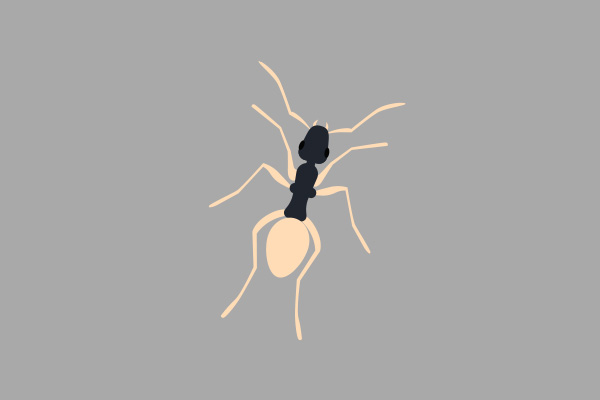The 'zombie ants' controlled by fungi no longer have their own behavior and life, and their final stage of life is also the most painful and terrifying. In the last few hours of their life, 'zombie ants' will crawl under the leaves where they are, firmly biting the central vein of the leaves with their jaws, thus trapping themselves on top of the leaves, while the parasitic fungi are also locked onto the leaves. This leaf became the 'ant grave'.

Within a one square meter area, 20 to 30 'ant graves' can be found. They usually sit on leaves at a certain height above the ground and tightly bite the main veins of the leaves before dying. This fungus cannot grow on tree crowns or forest vegetation. However, 'zombie ants' usually die on the leaves between the two, which are leaves that are at a certain height above the ground but have not reached the height of the tree crown. The humidity and temperature in this environment are most suitable for the survival of fungi. After the death of zombie ants, parasitic fungi will sprout from the ant's head, produce spores, and "shoot" them onto forest vegetation at night, infecting other ants. Infected ants will use all their strength to firmly bite down on leaves before dying, leaving their final imprint on this world with such force. They formed a very special bite mark on the leaves with the small hole they created with their own jaws, in the shape of a clear dumbbell.
Because in most cases, although this behavior control is strong, it is short-lived and generally does not leave a permanent imprint. The question is, what is the motivation behind this parasitic behavior, and why do they not just kill the host, but first control the host's brain and muscles before killing it. Among all parasitic organisms, only a small fraction have evolved the ability to manipulate host behavior. Scientists have not yet figured out how parasitic fungi control infected ants, but they know that parasitic fungi release alkaloid chemicals into ant bodies.
The lifespan of this organism is very unique. When spores fall from the air onto ants, or when they meet on the rainforest floor, ants begin to be infected. After attaching to ants, spores enter their bodies through enzymes, and fungi begin to grow within them. About a week later, chemicals released by the fungus will cause ants to lose their direction and bite down on leaf veins or other plants at their last moments before death.
Scientists have also found that the places where these ants die usually have the most ideal environment for the growth of fungi. After the death of ants, fungi begin to sprout slowly from their heads and grow spores. At night, these spores are released onto the rainforest floor to infect other ants.
The latest research shows that some fungi have backup plans if the spores fail to infect ants within a day of release after producing spores. Spores on the ground will gradually grow a secondary spore. When ants pass by, they immediately seize the opportunity to attach themselves to them.















